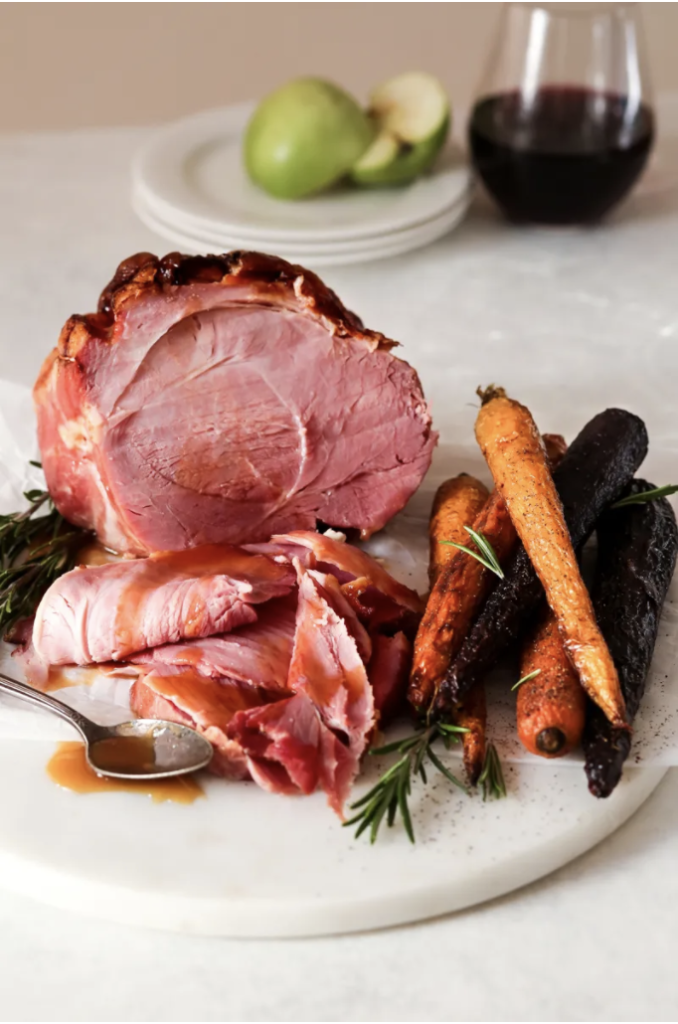We knew we wanted to bring a quality ham to your dinner table for the Holidays and are so excited for these fresh, seasoned and lightly hickory smoked hams. Since our hams are not fully cooked, we wanted to ensure you had the best recipe for your Holiday meal.

I know that holiday recipes often feel like lots of work – loads of ingredients and lots of steps. But, not this one! This ham comes together so quickly too, which is such a bonus.
Thawing your ham: Two methods that can be used to safely thaw pork are the refrigerator method and the cold water method. Never thaw pork on the kitchen counter. The outside of the meat will reach a temperature above 40°F while the inside is still frozen. The area that reaches a temperature above 40°F would be susceptible to bacterial growth. Use one of the thawing methods described below.
Approximate Refrigerator Thawing Time
| Small Ham | 4 to 5 hours per pound |
| Large Roast | 5 to 7 hours per pound |
Approximate Cold Water Thawing Time
| Small Ham | 2 to 3 hours |
| Large Roast | 30 minutes per pound |
Cooking: Using a thermometer is the most accurate method for testing doneness. A regular meat thermometer is inserted before placing the meat in the oven or other heat sources and it remains there throughout the cooking time. An instant read thermometer is used to check for the proper temperature once the meat has been cooked. The meat is removed from the heat source and the instant read thermometer is inserted into the thickest part of the meat to provide a temperature reading in approximately 15 seconds. Your goal is in an internal temperature of:
| Fresh Hams | 145° – 155°F |
- To avoid drying out ham, cook slowly at 325ºF. Allow 20 to 30 minutes per pound for ham that has not been precooked (follow directions on label for precooked hams).
- Begin roasting ham by placing the fattier side up if you can, the melting fat will baste your ham. Turn ham over half way through baking to avoid uneven salting from the brine in the meat.
- For a crisp surface on your ham roast, be sure the oven is preheated before placing the roast into the oven in an uncovered pan.
- Do not use sharp utensils that may pierce the ham when trying to turn it. The piercing allows valuable juices to escape. Use other utensils, such as wooden spoons and spatulas for turning the meat.
- Use proper cooking times and temperatures. Do not overcook pork or it will become dry and tough. Cooking to 145°F will result in clear or slightly pink tinted juices from the juicy and tender meat.
- After ham has completed roasting, take ham out of oven and let stand 15 minutes before slicing. Ham will continue to bake when out of the oven and letting ham stand for 15 minutes makes it easier to carve.
Because our hams are already naturally cured (without nitrates or nitrites!), we don’t recommend adding much seasoning! We hope you enjoy your ham as much as we loved providing them!

PLEASE COMMENT BELOW